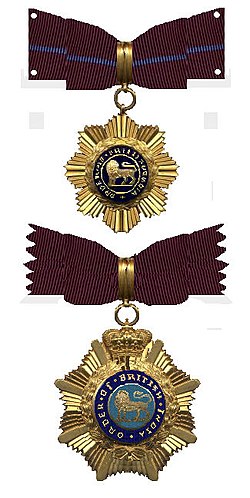The Order
The Order of British India was awarded by the Viceroy of India for long, faithful and honourable service by Viceroy's Commissioned (i.e. native Indian) Officers in the Indian Army. While the Order could be awarded for distinguished service on a particular campaign, it was more often awarded to selected serving officers of between 20 and 30 years service.
Establishment
When first ordered by Lord William Bentinck in April 1837, the Order was intended as a means of providing recognition for serving Indian officers in the East India Company's military forces. These so-called "Native Officers" faced slow promotion under a system that was based on advancement through seniority. The 1st Class of the Order conferred the title of sirdar bahadoor on the 100 subedars and risaldars (senior Indian officer ranks) to whom membership was limited, plus an increase in salary of two rupees a day. Appointments to the 2nd Class, limited to a further 100 Indian officers of any rank, entitled the recipient to the title of bahadoor and a more modest wage increase. In an article published in the Calcutta Review in 1856 Henry Lawrence however expressed the opinion that the Order had become "virtually the reward of old age" with its wearers mostly limited to retired pensioners.
Later history
In September 1939 eligibility was extended to include native officers serving in the Indian States Forces, Frontier Corps and Military Police, [3] and further extended in January 1944 to include native officers and Indian Warrant Officers in the Royal Indian Navy and the Hong Kong and Singapore Royal Artillery, as well as foreign officers, who could be appointed honorary members of the Order. [4]
Appearance
The Order was awarded in two classes, both worn from a neck ribbon: [5]
First Class. The badge consisted of a gold star 1.7 inches (43 mm) in diameter composed of rays of gold with in the centre the words ORDER OF BRITISH INDIA encircling a lion on a background of light blue enamel, surrounded by a laurel wreath, surmounted by a Crown. The enamel behind the wording was dark blue until 1939, when it was changed to the same light blue as appears behind the lion. [5] Recipients of the first class were entitled to use the title Sardar Bahadur (heroic leader). [3]
Second class. The badge comprised a slightly smaller gold star 1.5 inches (38 mm) in diameter of similar design to the first class, but without the crown and with the centre enamel in dark blue enamel. Recipients of the second class were entitled to the title Bahadur (hero). [3]
Holders of both classes could use the post-nominal letters OBI. [3]
All initial awards to the Order were in the second class, with appointments to the first class made from existing members of the second class. [2]
The ribbon was originally sky-blue, but changed to dark red in 1838 after it was found that the hair oil favoured by Indian soldiers stained the ribbon. From September 1939 the first class ribbon had two thin light blue strips added towards the centre of the dark red ribbon, while the second class had one light blue stripe added to the centre of the ribbon. [2]
Pakistan awarded the Order to a small number of seconded British officers who rendered outstanding services at the time of independence. [6] [5]
This page is based on this
Wikipedia article Text is available under the
CC BY-SA 4.0 license; additional terms may apply.
Images, videos and audio are available under their respective licenses.










